Be prepared for a lot of jamon, sangria, and churros.
I’m back in Boston but still in a daze from my lovely vacation. In all honesty, I didn’t know what to expect when I first arrived in Spain. I knew I would love the food, I knew I would love the culture, I knew I would complain about the heat. But I didn’t expect to be planning a return trip even before my vacation was over – it was just that wonderful.
Unlike my trip to Italy, where I was enthralled by every single thing because it felt so exotic and romantic, Spain felt familiar and comforting. It helped that I understood and spoke the language (eight years of studying Spanish is finally paying off), and it was absolutely spectacular to share the adventure with one of my dearest friends from the Philippines, Fe.
Fe and I decided to go on a trip together last December, so we had several months to save up and plan. Actually, being the good friend that she is and understanding my control-freak and planning-inclined nature, Fe let me plan all the details. Naturally, if you leave the planning to me, then you should expect to have a lot of gastronomic excursions and numerous pit stops for dessert. We went on a 5-day tour of the Andalucian region (Cordoba, Seville, Ronda, Costa del Sol, Granada, and Toledo) but made Madrid our home base – we were there for a couple of days before the tour, and a few more days after.
It’s hard to pick a favorite out of all the cities we visited, but I would have to say that Madrid is mine. It is a pretty small city, and while I enjoyed the usual tourist to-do’s (the Prado museum, Puerta del Sol, Serrano street for shopping, etc), I had a blast there because of the nightlife and the mouth-watering array of food. If you are planning a visit to Madrid, you can’t really go wrong just ducking into cafes or cozy restaurants for tapas and drinks. But some of the places and food were extra memorable for me, so here’s my Top 3 Food Experiences in Madrid:
1) Chocolate con churros at CHOCOLATERIA SAN GINES
Churros are Spanish fried dough, usually served with thick hot chocolate or coffee. It is typical breakfast fare, but at Chocolateria San Gines, it is served all day long (literally, as in the place is open 24 hours).
I have adored churros since I was a little child, and eating it as an adult always brings back sweet memories of merienda (snacks) and dessert with my family back in the Philippines. I love the hot fried pastry, with the crisp exterior and the doughy insides, being dunked into thick, decadent hot chocolate. I tried churros at a few other places during our trip but the ones at Chocolateria San Gines were hands-down, the best (Daisy shares my sentiments!)
2) Jamon Iberico, Pintxos, and Wine at MERCADO DE SAN MIGUEL
Mercado de San Miguel is a traditional Spanish market. It’s a bustling, bright, iron-and-glass building in the middle of the plaza, frequented by Madrileños and tourists alike. A New York Times review sums it up nicely:
By day the Mercado woos residents and visitors alike, with purveyors hawking everything from produce to fish, fresh pastas to pastries, cookbooks to cooking utensils. After hours, the crowd shifts focus to beers and tapas; the frutería closes; a wine bar draws a genial mob.
We went there a few times and basked in the lively atmosphere, coupled with affordable options for food and drinks.
This is a big statement to make, but I prefer jamon Iberico (Iberico ham) over prosciutto, over bacon, over any kind of cured pork or pork belly. Jamon Iberico, also called pata negra, is made from black Iberian pigs, which are bred on acorns and olives to produce the most strikingly-marbled meat.
Jamon Iberico is sold all over Spain, but it is one of the most expensive food products in the world. At Mercado de San Miguel, there is a stall where you can choose from different grades of ham, and the butcher slices it there right in front of you, from one of the many legs of ham hanging from the wall.
The meat is salty, silky, with an intense luxuriousness and a nutty aftertaste. I could eat jamon Iberico everyday. (I did.)
Pintxos are small bites (as opposed to tapas, or small plates) or snacks eaten in bars. Pintxo, or pincho, literally means spike, and most pintxos are skewered, often to a piece of bread. There are dozens of stalls at Mercado de San Miguel, each selling different kinds (sweet, savory, meat, seafood, fried, etc). We shared this plate of tuna with anchovies, cod liver, and bacalao with olive oil and dill.
In addition to the many food stalls, there are also various places for drinks at Mercado de San Miguel. We tried sangria (which I also had everyday, hehe) and different kinds of wine.
3) Sangria and Cochinillo at RESTAURANTE BOTIN
Restaurante Botin is the world’s oldest restaurant and possibly the most special meal we had during our trip (and by special, I mean white tablecloths and reservations were required). It is located on Calle de los Cuchilleros and it specializes in cochinillo (roasted suckling pig) and lamb. Now, if you must know one thing about Filipinos and food, it’s that we love our lechon, or whole roasted pig. So of course Fe and I had to make sure that we get to try some cochinillo at this world-famous restaurant.
Botin has a very old-fashioned feel, and the service was excellent. There were even some gentlemen singers who performed a few Spanish songs, which added to the joyous atmosphere.
 |
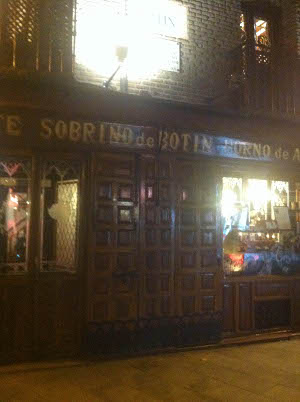 |
The cochinillo was tender and succulent, with crackling crispy skin. It was simply served with roasted potatoes, but we ordered a couple of sides too (eggplant and mixed veggies) since we just split one portion of the roasted suckling pig. We also shared a pitcher of luscious sangria. It was such an excellent dinner!
Other highlights of our stay in Madrid include:
 |
 |
the ginormous Prado museum, fresh baked pastries
 |
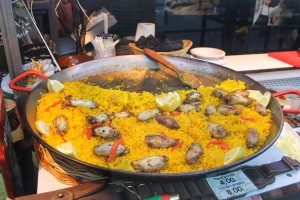 |
spaetzl with ox tail ragu, paella de marisco (seafood paella)
 |
 |
streets of Madrid, tapas menu at Taberna Matritum
 |
 |
view of Plaza Santa Ana from a rooftop bar called The Penthouse, mini jars of rice pudding
 |
 |
pan con tomate (toasted bread with olive oil and tomatoes), cones of sausages and chicharon (fried pork skin)
 |
 |
my room at NH Palacio de Tepa, view from the skylight
I highly recommend our hotel, NH Palacio de Tepa. It is built on top of the ruins of an old Spanish castle, and the hotel itself is a beauty reflecting 18th century Spanish architecture. It is also just a few minutes away from the famous Plaza Mayor and other attractions.
Oh and I almost forgot this:
Yes, indeed, that is the Museo de Jamon, or Museum of Ham. *sigh* I love Madrid.
I’ll post more recaps of Spain in the coming weeks!






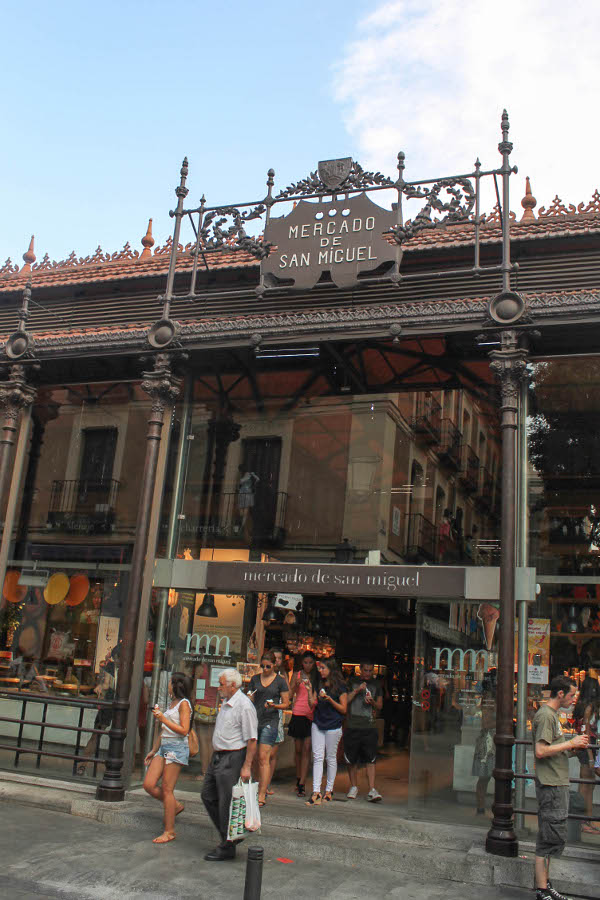




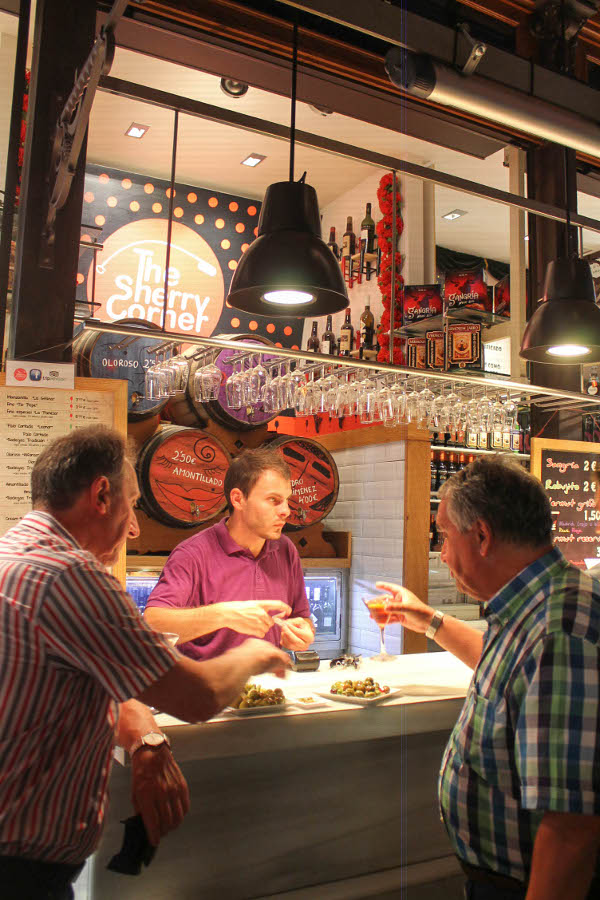



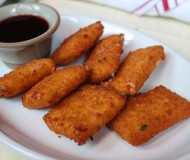


 Hi! I’m Bianca Garcia. I love food, running, yoga, sangria, and my job. I'm an advertising professional, social media enthusiast, blogger, freelance writer, and obsessive list-maker. I think about dessert constantly.
Hi! I’m Bianca Garcia. I love food, running, yoga, sangria, and my job. I'm an advertising professional, social media enthusiast, blogger, freelance writer, and obsessive list-maker. I think about dessert constantly. 







